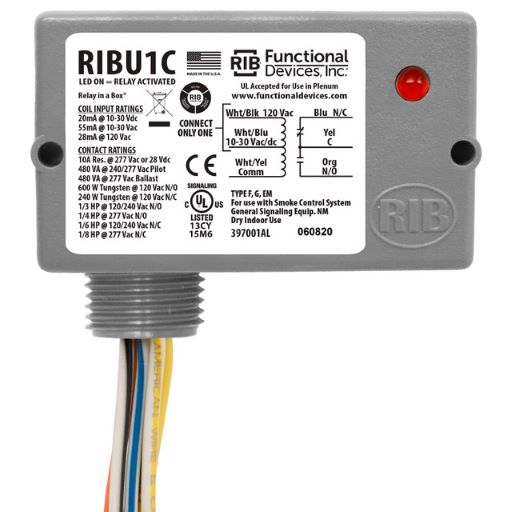Normally Open (NO) vs Normally Closed (NC)
NO vs NC Basics
Normally Open (NO) and Normally Closed (NC) are simple concepts and yet cause confusion even among experienced electricians and technicians. The problem is what is normal?
Door Contacts
A standard wired alarm door contact is, in its uninstalled state, open. However, when installed in a door jam with a magnet on the door, the circuit becomes a closed circuit. The contact is itself normally open, but used in a normally closed circuit.
It is important for an installer to be aware of the differences between a component's NO/NC state and how it will be used in a circuit.
If a door is wired with a supervised circuit, then an installer will need to install an NC contact so that when exposed to a magnet (as in the door is closed) the contact opens. Supervised door circuits are usually only used in commercial burglar alarm systems, but do exist in residential ones.
A Form C relay provides both NO and NC contacts in a single device. If you use door contacts for security or access control, you should always have a few of these on your service vehicle.
Relays In Components
Relays pose their own problems with NO and NC. In most cases, the relay terminals are labeled with the relay in a non-energized state. However, if the relay can only be used in an energized state, the installer must always factor this into account when wiring the device. This is very common on smoke duct detectors. The image below is from an analog duct detector. Notice the warning in the box. The manufacturer is warning the installer that the trouble relays are labeled for a non-energized state.

All circuits in a fire system are wired as supervised circuits. In this installation, you would use terminals 4 (NC) and 15 (C) with a resistor in parallel. The Trouble Contact is held open for normal operation and on power failure, the relay returns to a closed or shorted state, triggering the trouble notification.
For the alarm circuit, which is also wired as a supervised circuit, you would use terminals 6 (C) and 17 (NO). This is due to the fact that the relay for the alarm circuit is not held open by the device. It takes a positive action by the device to trigger an alarm. If the alarm relay functioned like the trouble relay, then a power failure would cause an alarm.
You must always be prepared to meter your switch or relay contacts to field verify operation. Recently we came across an older analog pull station that provided both Normally Open and Normally Closed contacts. This pull station was intended to be installed in hazardous areas so having a set of Normally Closed contacts to provide an emergency shut-down circuit was not unexpected. What was unexpected was the contacts were labeled for being in alarm position (pull station activated), not the normal state of the switch which was depressed (normal).
Components are usually labeled for their natural, uninfluenced state. Sometimes that is opposite the state of how you intend to use it. METER METER METER. Never trust labels.
Standalone Relays
Unlike relays built into components where the manufacturer knows how you are going to use the components, standalone relays have an untold number of uses. 
You should never trust the NO/NC labeling on a relay. Use your ohm meter to meter out the state of the relay in the manner in which you are going to use the relay. Some manufacturers will print the NO / NC terminals for a relay component, then they power up the relay on their board, which reverses the terminal labeling.
RIB, Relay-in-a-Box, relays are always labeled in a de-energized state.
Metering out a relay's state (open or closed) is always the best way to avoid issues. Whenever you use relays you should fully test every possible operation that the relay can experience to verify you got it correctly wired.